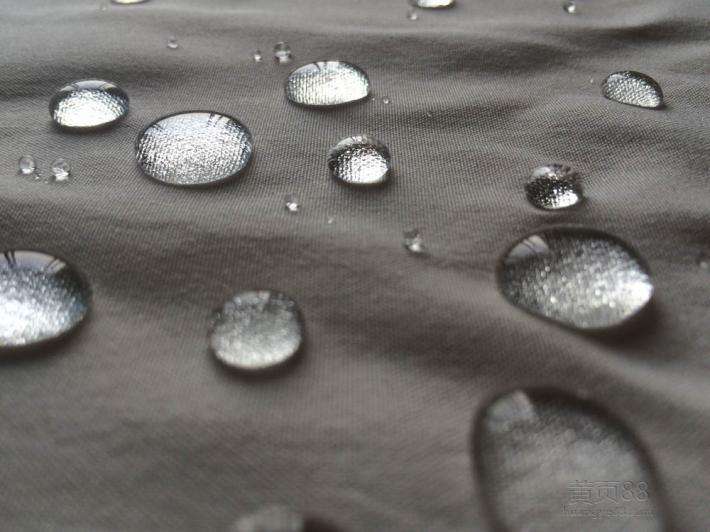
 防水剂 之 PFOA
防水剂 之 PFOA
PFOA代表全氟辛酸及其含铵的主盐,或称为“C8”,是纺织品“三防整理剂”的重要原料。全氟辛酸及其盐也是一个难以降解的有机污染物,它在环境中具有高持久性,随着时间的推移,它同样会在环境中聚集和在人体及动物组织中强烈累积,既会进入食品链中,又对人体健康和环境会较长时间的产生潜在的危险。不过EPA要对它禁用或限用要需要更多的科学资料来进行危险评估;欧盟迄今也未对全氟辛酸明确表态;但目前世界上不少纺织品公司和品牌纺织品销售商都已接受了全氟辛酸及其盐对人体和环境存在潜在危险的看法,在自己的化学品限制条款中明确禁用全氟辛酸及其盐,即:要求检测不出全氟辛酸及其盐。
PFOA represents the main salt of perfluorooctanoic acid and its ammonium, or "C8", and is an important raw material for textile "three anti-finishing agents". Perfluorooctanoic acid and its salts are also an organic pollutant which is difficult to degrade. It is highly persistent in the environment, and over time it also aggregates in the environment and accumulates strongly in human and animal tissues, both into the food chain. The potential risks to human health and the environment will be prolonged, but EPA needs more scientific information to assess the risks if it is to be banned or restricted; The EU has not yet made clear its position on perfluorooctanoic acid; But there are a lot of textiles in the world right now. Both companies and branded textile vendors have accepted the perception that perfluorooctanoic acid and its salts are potentially dangerous to human beings and the environment and explicitly prohibit perfluorooctanoic acid and its salts in their chemical restriction clauses. That is to say, perfluorooctanoic acid and its salts cannot be detected.
防水剂 之 PFOSPFOS全称为全氟辛烷磺酰基化合物(C8F17SO2X),是perfluorooctane sulphonate的英文缩写,PFOS主要应用于、防油剂、防尘剂、杀虫剂、表面活性剂、抗雾剂等,是纺织品和皮革制品防污处理剂的主要活性成分,广泛应用于民用和工业产品生产领域。PFOS的持久性极强,是最难分解的有机污染物,在浓硫酸中煮一小时也不分解。据有关研究,在各种温度和酸碱度下,对全氟辛烷磺酸进行水解作用,均没有发现有明显的降解;PFOS在增氧和无氧环境都具有很好的稳定性,采用各种微生物和条件进行的大量研究表明,PFOS没有发生任何降解的迹象。唯一出现PFOS分解的情况,是在高温条件下进行的焚烧。欧盟正式全面禁止PFOS在商品中的使用,首先受到影响的将是纺织、皮革等生产产品的出口企业。因为PFOS在纺织业中存在范围最广,任何需要印染以及后整理的纺织品都需经过前处理洗涤,另外如抗紫外线、抗菌等功能性后整理所使用的助剂也可能含有PFOS,该指令的实施将直接影响我国纺织品、皮革、造纸、包装、印染助剂、化妆品等产品的出口。
PFOS is known as perfluorooctanesulfonyl compound C8F17SO2XX, which is the abbreviation of perfluorooctane sulphonate. PFOS is mainly used in oil, dust, insecticide, surfactant, anti-fogging agent and so on. It is the main active component of antifouling agent for textile and leather products. PFOS, which is widely used in civil and industrial production, is the most persistent organic pollutant, which is not decomposed in concentrated sulfuric acid for an hour. Hydrolysis of perfluorooctane sulfonic acid at various temperatures and pH No obvious degradation was found. PFOS has good stability in both oxygen-increasing and anaerobic environments. A large number of studies using various microbes and conditions have shown that. There is no sign of any degradation of PFOS. The only case where PFOS is decomposed is incineration under high temperature. The EU has formally banned the use of PFOS in commodities. The first to be affected will be the textile, leather and other products of export enterprises. Because PFOS exists in the textile industry the widest range, any need to printing and dyeing as well as finishing of textiles need to undergo pre-processing washing. Other functions such as anti-ultraviolet, antimicrobial, etc. The additives used in finishing may also contain PFOS.The implementation of this directive will directly affect the export of textiles, leather, paper, packaging, printing and dyeing aids, cosmetics and other products in China.
防水剂 之 APEOAPEO中包括:① 壬基酚聚氧乙烯醚(NPEO):占80~85%;② 辛基酚聚氧乙烯醚(OPEO):占15%以上;③ 十二烷基酚聚氧乙烯醚(DPEO):占1%;④ 二壬基酚聚氧乙烯醚(DNPEO):占1%。为了适合纺织品多功能整理的要求,有机氟类油性防水剂通常制成乳浊液或分散悬浮液,因此,需要使用一个合适的乳化剂来稳定,过去较多使用烷基酚聚氧乙烯醚,即APEO,其生物降解性很差,并呈现出较强的急性毒性,再加上它会分解产生烷基酚,烷基酚是一种禁用的环境激素,欧盟由2005年1月17日起明确规定禁用烷基苯酚聚氧乙烯醚(APEO)及烷基酚。
The APEO consists of: 1 nonylphenol polyoxyethylene ether (NPEO): 80%, 85%; (2) octylphenol polyoxyethylene ether (OPEON): more than 15%; 3 12 alkylphenol polyoxyethylene ether: 1%; DNPEON: 1. In order to meet the requirements of textile multifunctional finishing, organic fluorine waterproof and oil repellents are usually made into emulsion or dispersion suspensions. A suitable emulsifier is needed for stabilization. In the past, alkylphenol polyoxyethylene ether, or APEO, was used with poor biodegradability and showed a strong acute response. Toxicity , coupled with its decomposition to produce alkylphenols , is a banned environmental hormone , which has been explicitly banned by the European Union from Jan . 17 , 2005 , with the exception of alkyl phenol polyoxyethylene ether ( APEO ) and alkylphenol .
防水剂厂家,广州佳伲思原创发布,如有疑问,可致电我司服务人员:13528386554 吴
